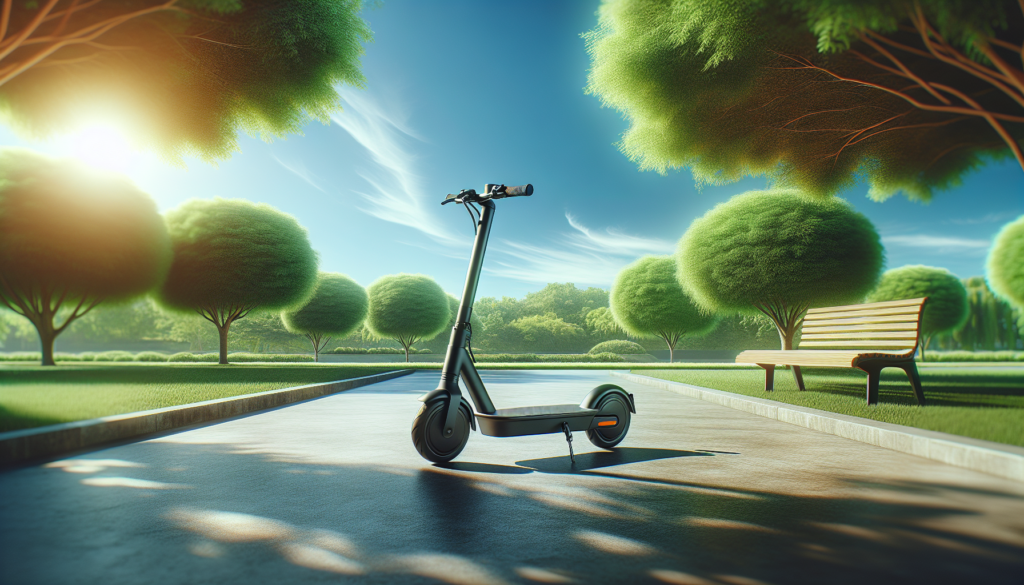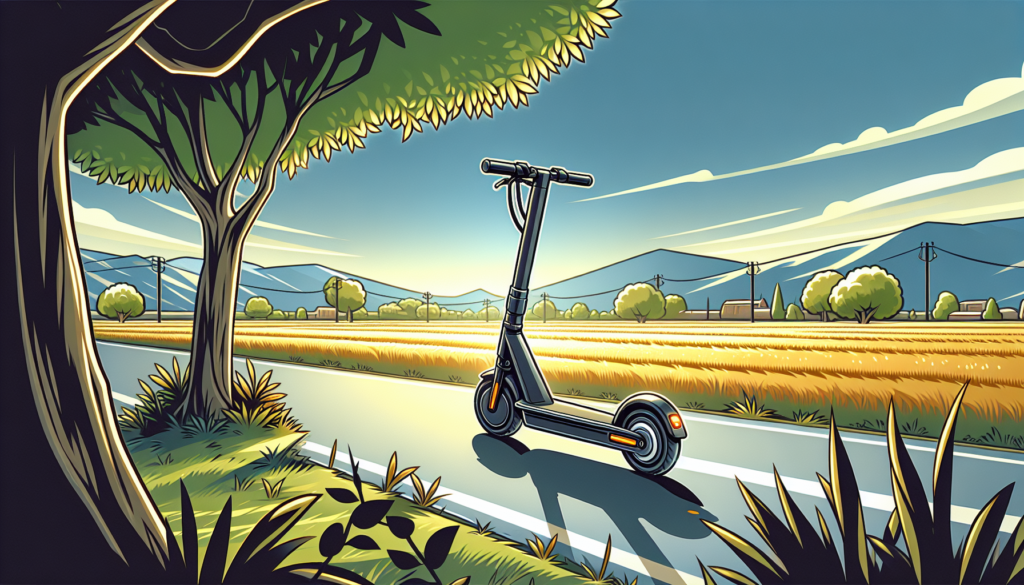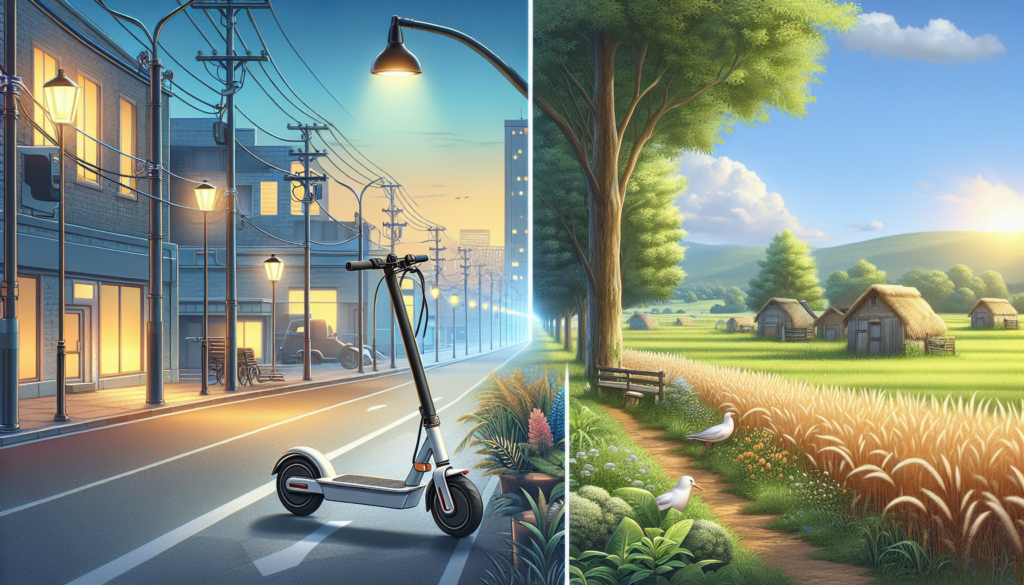
In recent years, scooter electric have surged in popularity as an efficient and eco-friendly mode of transportation. However, when it comes to the design, riders are often torn between two main styles: standing scooters and seated models. Each type of scooter electric has its unique advantages and caters to different riding preferences and needs. Understanding the utility differences between these two options can help you make an informed decision about which scooter will best suit your lifestyle.
Understanding Electric Scooters: An Overview
Electric scooters have revolutionized urban transportation, providing a more environmentally friendly alternative to traditional vehicles. These scooters come in various forms, primarily categorized into standing and seated models. Standing scooters are typically lightweight, compact, and designed for quick commutes, making them ideal for navigating crowded streets and public transportation. On the other hand, seated scooter electric offer greater comfort, often featuring larger frames and extended battery life, appealing to those who need longer travel times or prefer a more relaxed ride. Understanding the functionality and design of these scooters is crucial for deciding which type best suits your lifestyle.
Both standing and seated scooter electric serve distinct purposes, with their utility often dictated by the user’s preferences and intended use. For example, standing scooters tend to be faster and more agile, allowing users to easily zip around urban environments. Conversely, seated scooters cater to individuals with mobility issues, and longer-distance commuters who may require a break during their travel. Exploring these variations helps users determine their ideal scooter type, weighing factors such as comfort, speed, and availability of features to enhance their riding experience.
The Advantages of Standing Electric Scooters

Standing electric scooters offer a unique set of advantages that cater to a variety of riders. First and foremost, they promote better balance and agility, enabling users to navigate through tight spaces and busy urban environments with ease. The upright position not only allows for increased visibility but also encourages a more active riding style, which can be beneficial for physical fitness. Additionally, standing scooters are generally lighter and more compact, making them easier to transport and store. This portability can be a significant advantage for commuters who need to transition between different modes of transportation throughout their day.
Moreover, standing scooter electric often come equipped with features that enhance the riding experience. Many models include powerful motors that provide quick acceleration and efficient travel over various terrains, from smooth pavements to urban obstacles. The responsiveness of a standing scooter allows riders to weave through traffic and respond quickly to sudden changes in their environment. These scooters also tend to have a longer range compared to seated counterparts because they are designed to be lightweight and streamlined. Ultimately, the advantages of standing scooter electric make them an appealing choice for those seeking a blend of convenience, speed, and maneuverability.
The Benefits of Seated Electric Scooters
Seated electric scooters have gained popularity for their comfort and practicality, particularly for users who may require extra support or longer travel times. One of the most significant benefits of a seated scooter electric is the enhanced stability it provides. Riders can comfortably rest while navigating through urban areas or traversing longer distances, minimizing fatigue and maximizing enjoyment. This feature is especially beneficial for individuals with mobility issues or those looking to travel greater distances without the strain associated with standing for extended periods. Moreover, seated scooters often come equipped with storage compartments, allowing users to carry personal belongings or shopping items conveniently.
Comparative Utility in Urban vs. Rural Settings

When considering the utility of scooter electric options in urban versus rural settings, it becomes evident that each environment offers distinct advantages and challenges. In urban areas, where infrastructure is often tailored towards maximizing efficiency, a standing scooter might be more advantageous. These scooters allow users to navigate through congested streets and tight spaces with ease, facilitating quick exits and turns. With standing scooters generally being lighter and more compact, they can easily maneuver around pedestrians and seamlessly transition from bike lanes to sidewalks. Furthermore, parking is typically simpler in urban regions, making the standing configuration a more convenient choice for getting in and out of various crowded locales.
On the other hand, rural settings present a contrasting scenario where seated scooters may shine as the more optimal choice. In these environments, riders are often faced with longer travel distances and less paved infrastructure. Seated scooters provide increased comfort and stability over uneven terrain, allowing for extended rides without the fatigue associated with standing. Additionally, seated options can accommodate heavier loads, making them ideal for those who need to transport items while exploring the scenic countryside. Ultimately, the choice between standing and seated scooter electric models heavily depends on the specific needs and preferences dictated by the rider’s surroundings.
Safety Considerations for Standing and Seated Electric Scooters
When considering safety on scooter electric, the standing versus seated design plays a crucial role. Standing scooter electric often provide better visibility and a more dynamic riding experience, as riders can shift their weight to maintain balance while navigating obstacles. However, the lack of support can make it challenging for some users, particularly those with mobility issues or lower limb strength. Riders may find themselves at a greater risk of falls or accidents, especially on uneven surfaces or during abrupt stops. Therefore, it is essential for those opting for standing scooters to wear appropriate protective gear and ensure they have sufficient skill and practice in riding them safely.
On the other hand, seated scooter electric offer a more stable riding platform that caters well to those who may struggle with balance or endurance. This design typically includes a backrest, enhancing comfort during longer rides, and providing more control over the scooter’s movements. While seated scooters might limit certain dynamic maneuvers, they can significantly reduce the risk of accidents, making them a safer choice for elderly riders or those recovering from injury. Ultimately, understanding the context of use and personal preferences will guide individuals in making the safest choice between standing and seated scooter electric.
Factors Influencing Rider Preference: Comfort, Distance, and Usage
When it comes to choosing between a standing and seated scooter electric, several factors come into play that can greatly influence rider preference. Comfort is often at the top of this list; riders who value comfort during longer rides may find seated scooters more accommodating, as they provide a stable base and allow for a more relaxed posture. Conversely, standing scooters generally allow for greater maneuverability and agility, making them suitable for short trips or urban environments where quick navigation is advantageous. Consider how long you plan to ride and the terrain you will encounter, as these factors will significantly influence your overall comfort.
Moreover, the distance you intend to travel and your usage patterns are crucial in deciding which type of scooter to choose. If you have a longer commute or frequently cover long distances, a seated scooter electric might be your best option for extended comfort and endurance. On the other hand, if your travels are primarily short and sporadic, standing scooters can be a convenient and quick alternative. Ultimately, understanding your own needs in terms of comfort, distance, and how you intend to use your scooter will help you determine which style – standing or seated – is right for you.
Environmental Impact: Which Design is More Eco-Friendly?

When considering the environmental impact of scooter electric, both standing and seated designs have their unique benefits and drawbacks. Standing scooter electric tend to be lighter and more compact, which can contribute to a lower carbon footprint during production and transportation. Furthermore, they often use fewer materials than their seated counterparts, making them a popular choice for eco-conscious consumers. With less weight, standing scooters also require less energy for operation, which could lead to a reduced environmental impact over time, especially in urban settings where short, frequent trips are common.
On the other hand, seated scooter electric, while potentially heavier and constructed with more materials, may encourage longer journeys by providing greater comfort and support for users. This could promote a more sustainable mode of transportation over time, as people may choose to use them for commutes or leisure activities instead of relying on cars. Ultimately, the eco-friendliness of either design depends on usage patterns, material sourcing, and manufacturing processes. By evaluating these factors, riders can make more informed choices that align with their commitment to reducing their carbon footprint, regardless of the scooter design they prefer.
Market Trends: Current Innovations in Standing and Seated Models
In recent years, the electric scooter market has witnessed a significant evolution with innovative designs catering to various user preferences. Standing scooters, known for their agility and compactness, have become increasingly popular in urban areas where navigating through crowded streets is essential. The introduction of lightweight materials, powerful batteries, and enhanced maneuverability features has allowed standing models to thrive. Additionally, smart technology integration, such as GPS navigation and app connectivity, has improved the overall user experience, making them a more appealing choice for commuters looking for quick yet efficient transportation options.
On the other hand, seated electric scooters have also seen innovations aimed at comfort and accessibility. These models often feature ergonomic designs, wider seating, and adjustable handlebars, appealing to users who prioritize comfort over speed. Recent advancements include longer battery life and greater weight capacity, making seated scooters a popular option for those needing to travel longer distances or those with mobility challenges. As manufacturers continue to innovate, we can expect to see a wider variety of electric scooters catering to different needs, ultimately enriching the market landscape for consumers looking to make the right choice between standing and seated models.
Final Thoughts on Choosing Between Standing and Seated Electric Scooters
As we’ve explored the various aspects of standing and seated electric scooters, it’s clear that the right choice largely depends on your individual needs and preferences. Standing scooters are ideal for those who prioritize speed and agility, making them perfect for urban commuting and maneuvering through tight spaces. On the other hand, seated scooters offer comfort and stability, making them better suited for longer rides and those with mobility challenges. Ultimately, evaluating your lifestyle, distance of travel, and comfort requirements will guide you in making the best choice for your scooter electric experience.
Regardless of your choice, both standing and seated electric scooters come with their unique advantages. It’s essential to consider the terrain you will be navigating, as well as your personal style of riding. By keeping these factors in mind, you can find the perfect balance between functionality and comfort. Whether you’re a daily commuter or a leisurely rider, enhancing your mobility with the right electric scooter from EKO Life MY will undoubtedly enrich your travel experiences and boost your overall enjoyment.

I totally agree with the summary! Both types of scooters have their perks, and it’s great to consider our individual needs before making a choice.
Thank you for sharing your thoughts, Nur Syahirah! We completely agree that understanding individual needs is crucial in choosing the right scooter. At Eko Life Malaysia, we offer a range of standing and seated electric scooters that cater to diverse lifestyle requirements. If you have any specific questions or need further assistance, feel free to contact us at [email protected] or +60 3-7890 3042.
I’m torn between seated and standing scooters for my daily commute between Singapore and Kuala Lumpur. But after reading this, I think I’ll lean towards a seated scooter for comfort.
Hello Haziqah Binte Kassim, thank you for sharing your thoughts! I completely understand your dilemma, but I’m glad that this post has helped you make a decision. Seated scooters can indeed provide more comfort, especially for longer rides. However, if you ever change your mind or have any questions about the scooters, our team at Eko Life Malaysia is more than happy to help. Please feel free to contact us at [email protected] or +60 3-7890 3042. We’re here to assist you in choosing the perfect scooter for your lifestyle.
It’s interesting to see how terrain can play a significant role in choosing a scooter. As an avid rider, I always consider the terrain before heading out.
Hi Aurélien, that’s a great point about terrain being a crucial factor in choosing a scooter. At Eko Life Malaysia, we understand the importance of this consideration. Our team is always happy to help you determine the right scooter for your terrain and riding style. If you have any questions or would like to consult with us, please don’t hesitate to reach out at [email protected] or +60 3-7890 3042. We’re here to assist you.